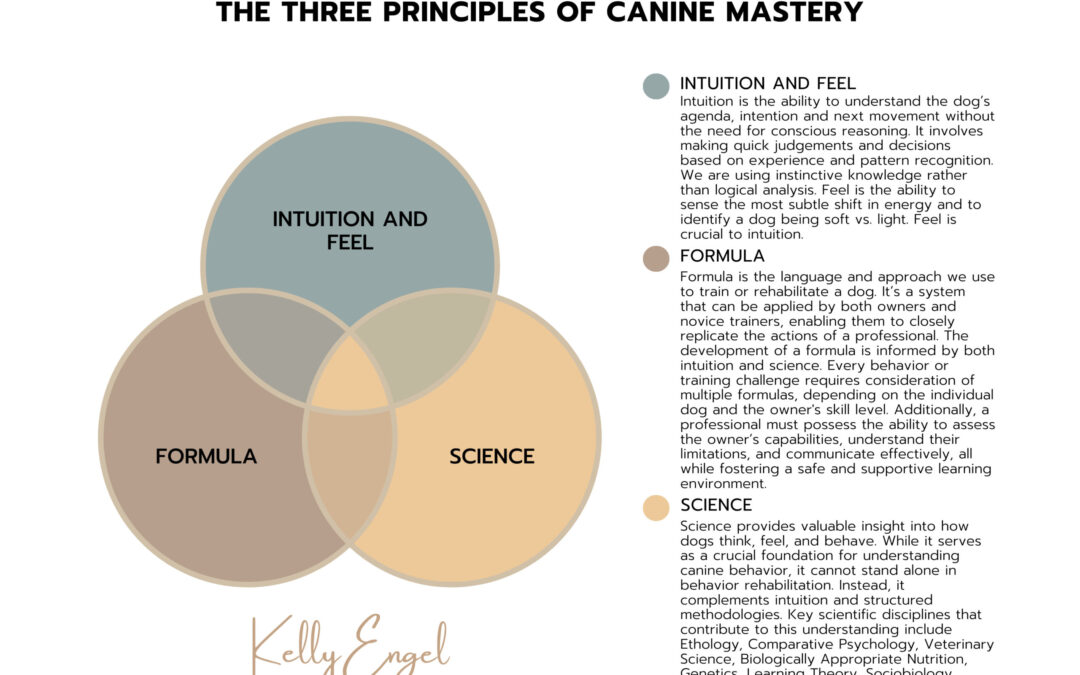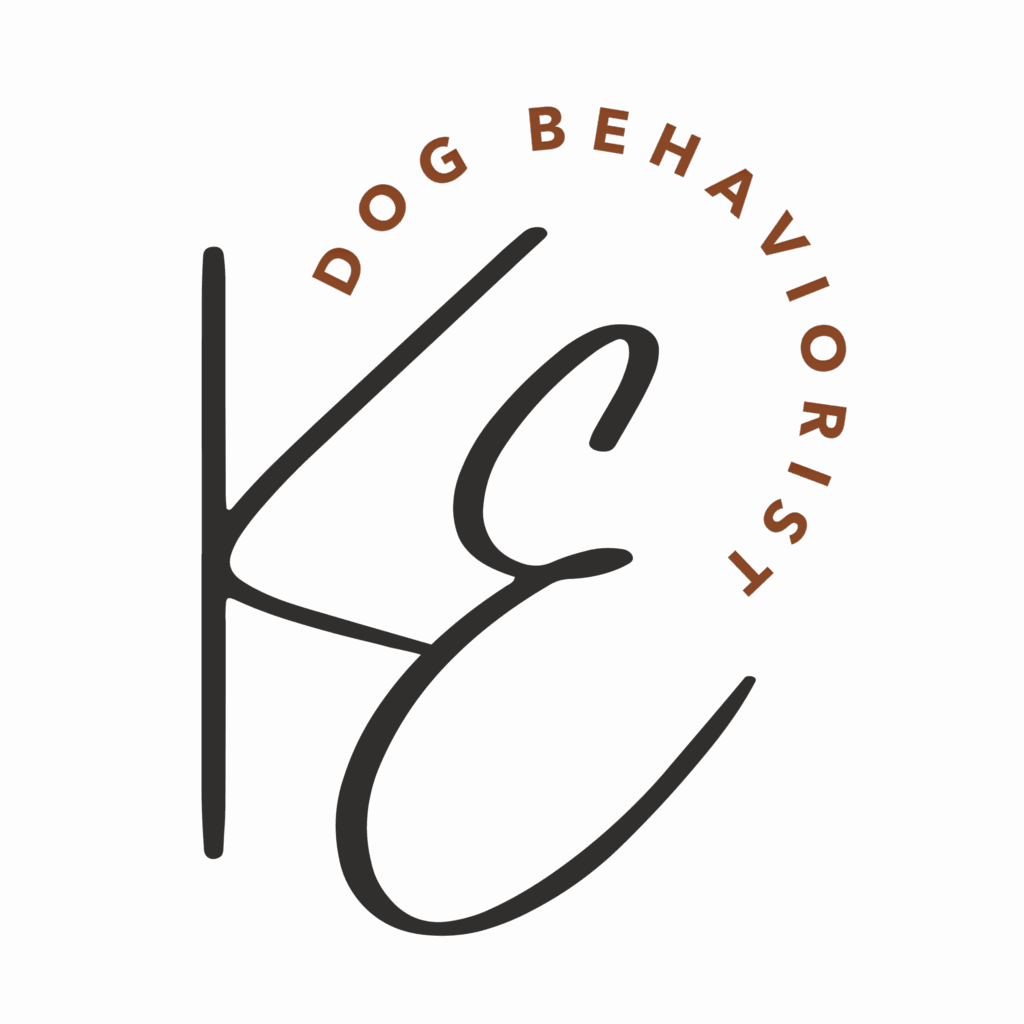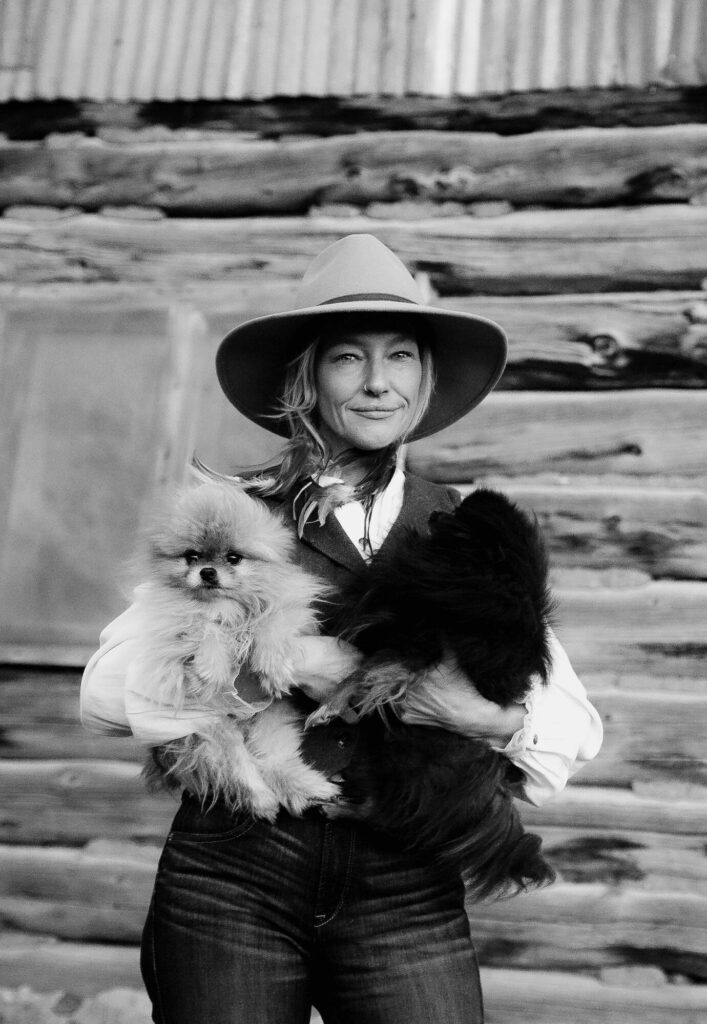I developed and hold the copyright to the Three Principles of Canine Mastery. This Venn diagram serves as a conceptual framework for evaluating professional competence in the field of canine behavior. It illustrates the dynamic interplay between intuition and feel, structured formula, and scientific knowledge. By using this model, dog trainers can critically assess their strengths and identify areas for continued growth, allowing them to provide more effective, holistic, and evidence-informed support to both dogs and their humans.
How did I develop this framework?
I’ve been “in dogs” my whole life. But when I first pursued dog training professionally, I struggled to explain why I made the choices I did when working with a new dog. I was relying almost entirely on intuition—I could feel what to do, but I didn’t yet have the language or structure to teach someone else how to repeat it.
Over time, this began to shift. After working with hundreds of dogs and clients, I started to see patterns. I gradually built vocabulary around my approach and created formulas that helped me understand not just what I was doing, but why it worked.
In 2021, I sold my training business in Montana and took a break to breathe—to just be with my own dogs again. But after a few years away from client work, I noticed a familiar imbalance creeping back in. Once again, I was operating heavily from intuition, but I lacked the language and formula to define how my approach to behavior and training had evolved during my career-break. That’s when the concept of a Venn diagram started to take shape in my mind—three intersecting circles I now call Intuition/Feel, Formula, and Science. I put it on paper and started to tease out where I was strong and where I needed to grow.
For instance, in the Formula circle, I sat down and wrote out my approach to every major behavioral issue I encountered—reactivity, dog-dog aggression, separation anxiety, poor recall, resource guarding. I didn’t try to force a one-size-fits-all solution. Each formula had to flex depending on the dog-human relationship, genetics, and human skill-set. But putting it on paper gave me a baseline approach to apply to every dog.
In my experience mentoring new trainers, it’s often Feel that’s the hardest to develop. For example, I’m 47, and I’ve been riding horses for 14 years. I’ve had wrecks that made me quit—then I’d come back a few months later and start over. It wasn’t until I lived with my four horses on my property, rode with a trainer every week, and spent time with friends who had lifelong experience, that I began to pick up real feel and intuition. Even now, it’s just starting to land.
Meanwhile, my friends who grew up riding—bareback, reckless, fearless—have a natural feel I can observe but can’t replicate. They learned the language of horses when they were young. That early exposure shaped how they read energy, anticipate movement, and adjust in real time.
In the dog training world, I see a pattern: many trainers lean almost entirely on Formula or Science. “Science-based” has become a buzzword. Trainers in franchises or schools of thought that emphasize positive reinforcement only, or strict obedience only, tend to stick to rigid protocols. There’s nothing wrong with structure—but structure without feel has limits and can harm the dog.
That’s why I created The Three Principles of Canine Mastery—to help trainers assess themselves honestly. Where are you strong? Where are you over-relying? Where do you need to grow? Most of us don’t know what we don’t know. But having a clear framework helps us see our blind spots and begin to balance the system.
The Three Principles of Canine Mastery
Intuition/Feel: Intuition is the ability to understand the dog’s agenda, intention and next movement without the need for conscious reasoning. It involves making quick judgements and decisions based on experience and pattern recognition. We are using instinctive knowledge rather than logical analysis. Feel is the ability to sense the most subtle shift in energy and to identify a dog being soft vs. light. Feel is crucial to intuition.
Formula: Formula is the language and approach we use to train or rehabilitate a dog. It’s a system that can be applied by both owners and novice trainers, enabling them to closely replicate the actions of a professional. The development of a formula is informed by both intuition and science. Every behavior or training challenge requires consideration of multiple formulas, depending on the individual dog and the owner’s skill level. Additionally, a professional must possess the ability to assess the owner’s capabilities, understand their limitations, and communicate effectively, all while fostering a safe and supportive learning environment.
Science: Science provides valuable insight into how dogs think, feel, and behave. While it serves as a crucial foundation for understanding canine behavior, it cannot stand alone in behavior rehabilitation. Instead, it complements intuition and structured methodologies. Key scientific disciplines that contribute to this understanding include Ethology, Comparative Psychology, Veterinary Science, Biologically Appropriate Nutrition, Genetics, Learning Theory, Sociobiology, Anthrozoology, Behavioral Ecology, and Psychopharmacology.



